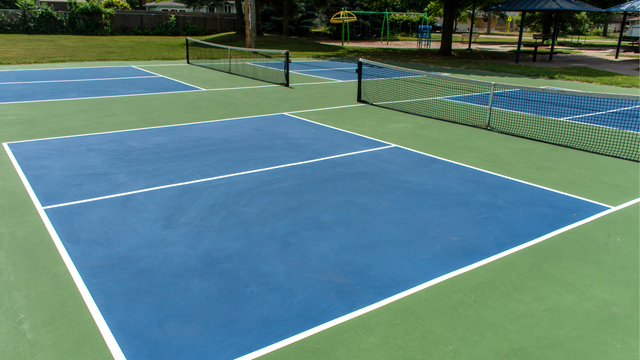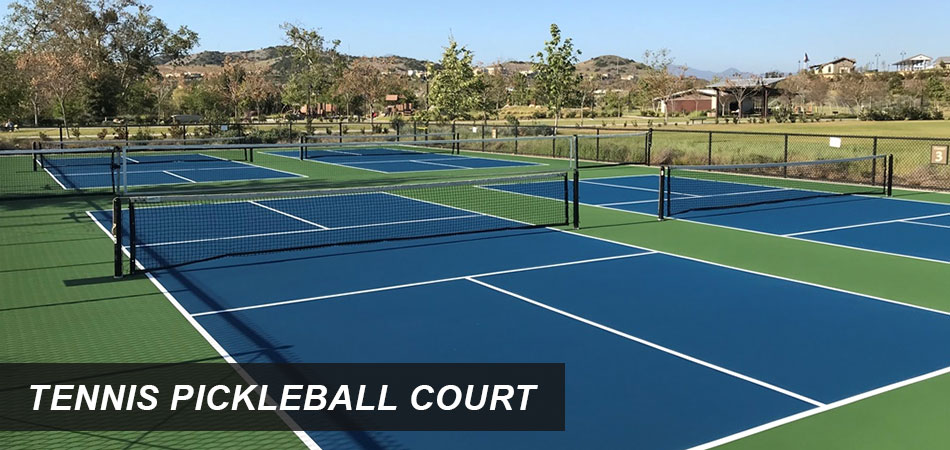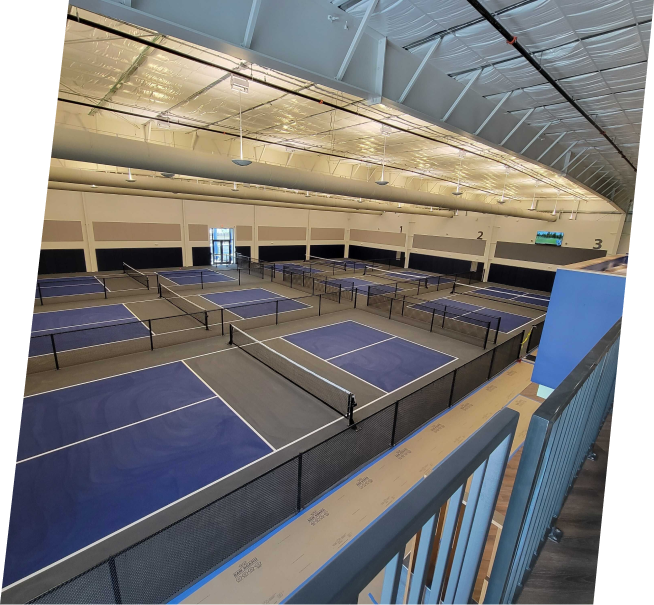A Comprehensive Overview to Designing the Perfect Pickleball Court for All Ability Degrees
Designing a pickleball court that caters to players of varying ability levels demands a complex approach, encompassing vital components such as court measurements, surface area products, and accessibility functions. What details factors to consider must be focused on to guarantee a successful application?

Recognizing Court Capacities
Comprehending the dimensions of a pickleball court is essential for both players and developers, as these specs guarantee a consistent and fair playing experience. A conventional pickleball court determines 20 feet wide by 44 feet long for both songs and increases play. The court is split into 2 equal fifty percents by an internet that stands 36 inches high at the sidelines and 34 inches at the center.
Trick features of the court consist of the non-volley zone, commonly referred to as the "kitchen," which expands 7 feet from the internet on both sides. This location is vital for controling gamer motion and volleying, making certain calculated play. In addition, the service locations on each side of the court are vital, gauging 10 feet broad and 15 feet deep, made to accommodate appropriate offering strategies.
Surrounding the court, an area of a minimum of 10 feet should be assigned as the safety and security zone, enabling players adequate room to move and avoid injuries throughout play. Following these measurements not just promotes fair competitors yet additionally advertises safety and security and enjoyment for all participants, making it crucial for any pickleball court design.
Choosing the Right Surface
The selection of playing surface for a pickleball court considerably influences the game's dynamics and gamer experience. Picking the appropriate material is critical for making sure gamer efficiency, security, and comfort. Usual surface areas include asphalt, concrete, and specialized sporting activities floor covering.
Asphalt is a popular choice due to its price and durability. It supplies a consistent having fun surface however can be hard on joints over prolonged play. Concrete, while similar in longevity, uses minimal versatility, possibly resulting in raised effect on gamers' bodies.
For a more supported experience, many centers choose specific sporting activities floor covering, such as modular ceramic tiles or artificial surfaces. These products usually include shock-absorbing buildings, reducing the threat of injuries and enhancing player comfort. Such surface areas can enhance sphere bounce consistency, which is vital for fair play.
When selecting a surface, think about variables such as environment, upkeep needs, and the strength of play. An appropriate surface not just improves gameplay however also contributes to the longevity of the court itself. Eventually, understanding the subtleties of different materials will certainly assist in developing an optimum pickleball atmosphere tailored to numerous skill levels.
Optimal Court Format
An ideal court format is crucial for optimizing both player efficiency and spectator satisfaction in pickleball. The measurements of a common pickleball court are 20 feet broad by 44 feet long for increases play, preserving a clear border that improves gameplay. The web, positioned at 36 inches high at the sidelines and 34 inches in the center, is crucial for keeping the dynamics of the game.
Including assigned locations around the court for players to relocate openly is important. A minimum of 10 feet of clearance on all sides of the court is recommended to stop collisions and provide room for spectators. In addition, orientation plays a substantial role; the court must preferably be important link aligned north-south to decrease the impact of sun glare on gamers throughout peak hours.
Reliable viewer positioning is just as essential. Elevated checking out bleachers or locations positioned behind the sidelines can enhance the experience while making sure safety and security. Lastly, clear and visible court markings help in gameplay, with contrasting shades for borders and non-volley areas that delineate vital areas for players. Overall, a well-designed court layout fosters an interesting atmosphere for both viewers and gamers.

Ease Of Access Factors To Consider
When creating a pickleball court, ensuring access for all players, consisting of those with disabilities, is extremely important. A thoughtfully made court can promote inclusivity and urge participation from people of differing abilities.

Access routes to the court must also be thoroughly planned. Guarantee that pathways leading to the court are wide This Site enough for mobility device customers and are outfitted with ramps where needed. Signage ought to be clear and large sufficient to be quickly read.
Furthermore, seating locations need to be developed to permit simple access to and from the court. This includes supplying assigned rooms for viewers who might have wheelchair difficulties.
Lastly, make certain that bathroom facilities neighboring meet accessibility criteria. By thinking about these components, you can create a pickleball court that is inviting and usable for every person, thus advertising a lively and varied community of gamers.
Upkeep and Upkeep
Appropriate upkeep and upkeep of a pickleball court are crucial for guaranteeing optimum playing conditions and extending the life-span of the facility. Regular evaluations must be conducted to determine and attend to any kind of damages or wear, such as fractures in the surface area or loose netting. These problems, if left ignored, can adversely influence gameplay and safety.
Surface maintenance is vital; courts must be cleaned frequently to remove debris, leaves, or dirt that can affect grip. For tough courts, routine stress cleaning is suggested to maintain surface area honesty and aesthetic appeals. If your court is made from softer materials, such as asphalt, resurfacing or securing may be required to protect versus weather-related wear.
Furthermore, net elevation and stress ought to be checked consistently, as improper settings can modify gameplay. Maintaining surrounding locations, including secure fencing and illumination, is similarly important for making sure a enjoyable and secure atmosphere.
Verdict
In final thought, the style of a suitable pickleball court necessitates a precise strategy that incorporates correct dimensions, appropriate surface area products, and thoughtful format. By sticking to these guidelines, the ideal pickleball court can be produced, advertising satisfaction and athletic development for gamers of varying ability levels.
Designing a pickleball court that provides to players of differing skill degrees requires a multifaceted strategy, including vital elements such as court measurements, surface area products, and accessibility attributes.Comprehending the measurements of a pickleball court is important for both developers and gamers, as these specs guarantee a consistent and reasonable playing experience.The selection of playing surface for a pickleball court considerably influences the video game's characteristics and player experience.An optimal court format is important for making best use of both gamer performance and spectator pleasure a knockout post in pickleball. By sticking to these guidelines, the best pickleball court can be created, advertising pleasure and sports development for players of differing ability degrees.